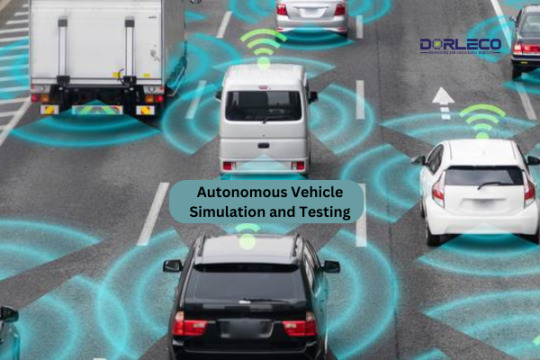#difference between open loop and closed loop control system
Explore tagged Tumblr posts
Text
Corrupt
Megatron x Reader
NSFW | DeadDove
I cant write anymore of this, i had more -even a plot for it, but im cringing every 6 seconds with this. But maybe someone out there wants to read it idk
its tfp megs but his altmode is g1 gun
Warnings: Drugs, Gunplay, Power Dynamics (duh), Megs is fucked up, but ur just as doomed. At least he calls you a good girl? Abrupt ending cause i died, I tried to make it not as painful...
-----
“Open.” he demanded. Transformed into his gun mode, laying in your hands. The cold metal resting in your palms.
Completely glazed over, washed with a fog of grey, you don’t even know what’s going on anymore. The drugs in your system have messed you up so hard that all of your senses have been dulled to the point you barely know how to breathe. Eyes half rolled up with your mouth hanging open as soft pants come out; your body attempting to stabilize its breathing. The only sounds to your muffled hearing is your desperate whimpers and his commands.
“Be a good girl and take it.”
His orders ring through your ears.
“Be a good girl and take it.”
“Be a good girl and take it.”
That’s right. I’m a good girl. Completely void of any dignity, as you have your legs on your knees, you sit on the berth. With your eyes barely a slit, staring at the Walther P38 in your hands. Nodding at it as you pick it up, safety unlocked, holding onto the grip.
“Keep your eyes open.”
Unaware that you’ve closed them as you diverted all of your attention opening your mouth to hold out your tongue, you force your lids up as much as you can. Just barely open, but enough to be able to see –not that you can make out what’s heads or tails of anything.
It’s all about control. He doesn’t need you to see anything, so long as you obey his directions. But forcing all of your senses online is part of the game, he’s ultimately controlling you.
He got a first hand glimpse of what you can do. Something awoke inside of him when he saw the way you draped your tongue out in front of him. At that moment, he knew. He wanted to feel you, wanted to know what it felt to be wrapped around an organic’s intake, the wet and softness of it? Would it be warm? To see your completely broken submissive face as you take him. His spike is already pressurizing, but that’s not what he wanted. That will come another day. For now, he needed to know what it felt like with your lips sealed around him, tongue twirling around him.
“Good girl. Now put it in.”
The only actions you can do at this rate are simple movements. Fortunately, it’s enough. Placing the bottom of the barrel onto the tip of your tongue as you bring it back. Fear has long escaped you. You know it’s from the drugs, but what are you going to do? Fight them? They’re already in your system.
You hear a muffled groan, taking that as a good sigh, sliding it further in. Gently running the body of your tongue along the bottom of the barrel, thin enough that you can cover the whole surface area with a slight curve.
’Primus, he did not know it would feel this good.’ If he would have known this is what organics felt like, he would have taken you a long time ago. The warm and wet of your tongue colliding with his cold and metal body, clashing into a harmony of pleasure.
“More.” He demanded.
His words rumbled in your mouth, sending vibrations down your throat. His voice was already a deep baritone, but with it muffled by you, it felt even more exhilarating.
Desperate to please him, you begin to slide your tongue up. Slowly rolling it over the barrel, making a loop. Repeating a few times before switching direction, heading the other way.
If he was in his bot mode, he would be clenching his servos and gritting his denta. He may be unable to physically express the emotions, but they’re there. Jolts of shocks run through him as he lets out a low growl. He could almost feel himself shaking, only hoping that you had enough of a grip to hold him well.
A delicate trust between 2 completely different species, a twisted odd of faith as his safety rests in your hands, and your own death being one trigger away. He would hope you would not, you’re too precious for that. Yet the thrill of giving you that choice, –and being the one to be able to take you offline, makes him feel something he’s never felt before. Murdering bots? Originally he felt something. Guilt perhaps? But over time it did not matter anymore. It’s the thin line of trust that you will not do it that excites him. That you’re given the choice in your own palms, but you’d rather choose him.
#transformers#megatron x reader#megatron x human#dead dove do not eat#transformers x reader#transformers x human#primus cant even save me#unicron probably gave up too#istg i im writing fluff for the rest of my life#rambles
50 notes
·
View notes
Text
Okay so in a game like Animal Crossing, there's a bunch of things all happening at once. You can have a screen full of villagers walking around doing their thing, balloons flying, bugs bugging, a system in the background to handle hourly background music with chimes in between, all that good stuff, while you're doing your own things.
When you talk to a villager, you and the villager both stop on the spot, and a script takes over. That script then makes the villager turn to the player and a dialogue window appears. There may be a multiple choice thing now — "talk", "gift", or "leave" — and the script won't stop, releasing control to both, until what you've selected plays out.
So you have a villager with an attached script. The villager waits for the script to finish before continuing on their merry way, while the script waits for the villager to finish turning to the player. Once that's done, it picks something to say and eventually ends up opening the dialogue window. The script now has to wait for the message to finish writing, and the very next command is an "if" involving the result of a multiple choice question, so now the script has to wait for that to return.
I was thinking for Project Special K I might implement all that as several Tickable objects. Not unlike in SCI, you'd have a big list of things in the game that all implement a Tick method. In SCI, that'd be the cast, and its members have doit methods. It's the same deal, but Tick also gets a delta-time argument. So the dialogue box gets to be its own thing that implements Tickable, the multiple choice box is as well. Inventory window? Yes.
Also the script interpreter.
But all that wouldn't let the villager wait for the script interpreter, which waits for the dialogue box, right? Script execution should be halted until the dialogue box is dismissed. That one villager's AI should be halted until the interpreter finishes, only moving (or rather, emoting) because of embedded commands in the dialogue box's text stream.
So I figured, what if I gave them something like a mutex variable? The villager would have a bool waiting or whatever, and passes a pointer to that bool to the script interpreter they spawn when the player interacts with them. The interpreter is added to the cast list and starts running the code it was given. When it's done, it not only removes itself from the cast but sets the bool pointer so the villager can tell it's over and done with.
Now every time through the loop, the villager's Tick is called and they can tell "oh, I'm waiting for a script to finish" because their bool isn't set yet. The script interpreter likewise can spawn a dialogue box into the cast and have its own "waiting for that darn dialogue box" bool, in exactly the same way the villager can wait for the script interpreter.
Next trick, the dialogue box should remain on screen even when things are done, so multiple choice answers can have the question remain visible. It should only close when a different style of box is called for, or when the script ends. My idea is to always have a dialogue box object in the cast, idling until called for. When the villager realizes the script has ended, they can simply poke the dialogue box and have it close, if nothing else already did.
#animal crossing#project special k#script engines#ramblings#game design#game implementation#what the fuck is a mutex#was that even the right word
97 notes
·
View notes
Note
oh my GOD SELF AWARE COVE HAS SO MANY POSSIBILITIES IM GONNA BE THINKING ABOUT THIS FOR AGES
JUST- the thought of Cove slowly realizing he’s going through a loop over and over and over and with every loop the MC starts to look and feel stranger and more far away to Cove and it’s driving him INSANE. Cove starts to keep track of these loops and notices that sometimes things get ever so slightly different or drastically different (say the players deciding to romance a different character or is doing a 100% platonic playthrough etc etc)
THE WHIPLASH COVE WOULD FEEL WHERE IN ONE LOOP THE MC IS ALL LOVEY DOVEY THEN IN THE NEXT THEYRE COLD AND INDIFFERENT TOWARDS HIM CAUSE THE MECHANIC OF COVE FEELING THE SAME WAY WOULD JUST BREAK UPON HIM BECOMING SELF AWARE
Cove having to deal with the feeling of closing his eyes as an adult only to open them and see he’s 8 years old again. What the hell just happened???? He was just at his own wedding with the love of his life and now he’s suddenly a crying child back on the poppy hill!!
AND THEN- and then Cove paying more attention to the MC as the loops go by and seeing them fade into this weird uncanny husk, they’re starting to feel more like a puppet than a person, and it terrifies him. What’s going on??? Are they okay?? Why is this happening to them????
Soon enough as he looks at the MC he finally notices and realizes that the MC “never existed”. This whole time the person he’s spent basically his entire life with never existed as someone in Coves world. No, instead they’re just a projection of someone else. Who? Coves not sure, but he feels like that whoever it is they’re the person who he’s actually been falling for over and over again.
And at that realization he come to the conclusion that he needs to meet this person beyond the veil, and he needs to meet them now.
This got kinda horror adjacent I apologize I got carried away-
NO THIS IS PERFECT
it tears him apart every time bc if you choose to romance someone else or not befriend/romance him, he can't say anything different since he doesn't have control over the system and he doesn't wanna alarm you
so he's forced to feel indifferent to you, and even in between he can't talk to you bc you're not real, the "you" that's here isn't interested in cove, and if "you" do take interest in him it's bc of the system, and everything is set in place as always
slowly he works out how to get to you, and he's leaning over you in his buff/lean, (tatted,) 6+ foot glory and teary eyed, asking why you keep playing with him, experimenting on him like this, making him watch you confess to baxter after he's loved you for 15 years. asking why you'd make that deal n choose his best friend derek over him.
well, it doesn't matter anymore. you can be together now, don't worry about his life in sunset bird, you can just build a life together just the two of you for now!!!
he actually prefers you like this compared to the game. you can say whatever you want without limits or prompting. and he can see your expression, hear your voice, actually touch you...
oh, and please don't go anywhere without him if possible or look at other men, fictional or real, with interest. he's everything you need, you've made him to fit your needs every time. you've came back to him hundreds of times in the end, so if you see smth you like on another man, cove will change his style, look, or behavior so just stop looking else were.
unless you can't, then he'll have to punish you. make you look him...
don't worry, he won't hurt you! he really could never do that, no matter how broken or.. well, twisted. he is
just wants to make sure you remember you're his, and he is yours. so if he makes you sit in his lap for hours, making you trace his face and body and features, telling him everything you love abt him inside and out, then just do it.
and if he decides to punish you in other ways, you can handle it right? you've played his 18+ dlc's multiple times, you read all those dirty stories abt him and you always kiss him n grope him when you can in the main game
he just wants to love you, and be loved by you for real. so indulge him a bit, won't you?
80 notes
·
View notes
Text

Proba-3 will constantly measure Sun's energy output
Proba-3 is such an ambitious mission that it needs more than one single spacecraft to succeed. In order for Proba-3's Coronagraph spacecraft observe the sun's faint surrounding atmosphere, its disk-bearing Occulter spacecraft must block out the fiery solar disk. This means Proba-3's Occulter ends up facing the sun continuously, making it a valuable platform for science in its own right.
The sunward side of the Occulter therefore hosts a dedicated instrument that will maintain a continuous measurement of the sun's total energy output, known as the total solar irradiance, which is a essential variable for climate studies.
The shoebox-sized Davos Absolute Radiometer, DARA, has been supplied to the mission by the Physical Meteorological Observatory Davos, PMOD, in Switzerland.
"Researchers used to talk about the 'solar constant' but in fact it is always changing slightly," explains Wolfgang Finsterle, DARA Principal Investigator at PMOD. "And it's essential to keep track of the total solar irradiance, because it is the dominant energy input to the surface of the Earth.
"It amounts to something like 99.978% of the energy available on Earth, including the conserved solar energy stored in coal and oil. It drives all the dynamic processes of Earth's climate, so even the tiniest variations are hugely significant."
The mountain-based PMOD has been studying total solar irradiance for more than a century, initially with ground-based instruments and then from the 1970s deploying space-based radiometers to acquire a continuous dataset. The World Meteorological Organization has mandated PMOD as the World Radiation Centre to calibrate radiation measurements across global UN monitoring programs.
Wolfgang adds, "Total solar irradiance varies along with the 11-year cycle of solar activity, and one of the most obvious ways to look for long-term energy drift is to compare total solar irradiance between consecutive solar minimia.
"This requires a long time-series of data, ideally coming from multiple instruments because single radiometers will undergo degradation in sensitivity from the hard ultraviolet in the sun's rays they are continuously exposed to. That said any degradation is very gradual: the radiometer aboard the ESA-NASA SOHO solar observatory for instance, which was launched in back 1995, is still working satisfactorily."
DARA's basic operating principle is simple. The radiometer possesses a 5-mm diameter cavity made from black-painted silver, possessing low temperature emissivity. For 15 seconds at a time, sunlight warms the interior of the cavity, then a shutter blade automatically closes at its entrance.
For the next 15 seconds, electric heat maintains the cavity's previous temperature—and the energy needed to maintain this temperature is extrapolated to the unit of total solar irradiance, which is watts per meter squared.
This process continues for the entire lifetime of the instrument—the actuated shutter design employed in DARA has been tested for millions of openings and closings in PMOD's vacuum chamber.
"DARA is an improvement on previous radiometer designs with an optimized cavity design to minimize unwanted straylight and a multi-channel measuring system for self-calibration," adds Wolfgang. "This generation of instrument also possesses a fully digital control loop, allowing the possibility of experimenting with higher frequency observations.
Two versions of this radiometer design have already flown, notes Werner Schmutz of PMOD, who oversaw its development: "A compact version called CLARA flew on Noway's NorSat-1 CubeSat in 2017, remaining operational to this day, while a previous DARA is serving aboard the Chinese FY-3E weather satellite, launched in 2021. So we have high confidence in the design, which can operate whenever the Proba-3 Occulter is pointed at the sun within half a degree of accuracy."
The main difference between Proba-3's DARA and previous radiometers will be its very elongated orbit, which will carry it 60 000 km above Earth's surface. DARA can automatically adjust to slight changes in the size of the solar disk based on how far it is away—which are also due to Earth's yearly elliptical orbit around the sun. All the radiometer needs to know is its position in space and its data gathering compensates for the shift.
3 notes
·
View notes
Text
Can You Remove the Speed Limiter on an eBike? What to Know Before You Try
Understanding E-Bike Speed Limiters
You can remove the speed limiter on most electric bikes. However, you should think carefully before doing this. Higher speeds might seem exciting, but this choice comes with serious risks and trade-offs that you need to understand first.
This guide will help you learn about the laws, safety issues, and common ways to unlock your e-bike's speed. You can then make a smart decision about what's right for you.
Why Speed Limiters Are Important
Your e-bike has a speed limiter for good reasons. The main purposes are to follow laws and keep you safe. Most areas classify e-bikes based on how fast do electric bikes go with motor help.
In the U.S., Class 1 and 2 e-bikes must stop helping at 20 mph. Class 3 e-bikes can reach 28 mph before the motor stops helping. Europe sets the limit at 25 km/h for most e-bikes. Going faster than these speeds can make your e-bike count as a different type of vehicle, like a moped, which has different rules.
Companies also design the frame, brakes, and tires to work safely at the speed limit. Higher speeds put more stress on these parts and might cause them to break. Speed limiters also protect manufacturers from being blamed if something goes wrong, since the bike meets safety and legal standards.
Understanding the Risks
You need to know about the problems that can happen before you try to change your bike. Removing the speed limiter can hurt your wallet, your safety, and get you in legal trouble.

The warranty will be canceled right away if you mess with the speed limiter. Almost all companies will not fix your motor, battery, or controller for free after this change. You might also get fines or have your bike taken away if you ride a changed e-bike on public roads.
Your insurance might not pay for accidents involving a bike that was changed illegally. Higher speeds also mean you need to stop faster and react quicker than before. Your bike's regular brakes might not be strong enough to stop safely from higher speeds, and the motor and battery will wear out much faster.
How to Remove Speed Limiter on Electric Bike
These changes are risky and might break your e-bike forever. Take pictures of all wire connections before you start, and always test in a safe place away from traffic.
Method 1: Display Settings
This is the easiest way and works on some e-bike models. You can usually undo this change if needed later.
Turn on your e-bike first. Hold down a combination of buttons on your display, like the plus and minus buttons at the same time. Look through the menu for "Speed Limit" or "Wheel Size" settings.
You can change the speed value or make the wheel size smaller to trick the computer. This makes the bike think it's going slower than it really is. Check your manual or online forums for the exact steps for your bike model.
Method 2: Physical Changes
This harder method involves changing the bike's wires and can easily damage your bike. It works mainly on simpler hub motor ebikes.
Turn off the bike and remove the battery completely. Find the motor controller, which is usually in a metal box near the pedals or battery. Open the controller and look for a speed limiter wire, often a thin white or gray wire that loops back into the same connector.
Carefully disconnect this wire, but be very careful not to damage other parts. You can find help from experienced riders online, but remember that this is risky and might break your bike.
How to Remove Speed Limiter on Electric Bike Shimano
Big mid-drive systems from Shimano, Bosch, and Brose have speed limits built into the motor's software. Cutting wires won't work on these systems, so you need special hardware instead.
Tuning kits called "SpeedBox" or "tuning dongle" are the most common solution. This hardware goes between the speed sensor and the motor to change the signals.
The kit catches the signal from your wheel's speed sensor. When you get close to the speed limit, it tells the motor computer that you're going slower than you really are. This lets the motor keep helping you go faster than the normal 20 or 28 mph limit.
Using a tuning kit will cancel your warranty and might stop working if the manufacturer updates the software. These kits also cost money and might not work with future bike updates.
Making Smart Choices
You can remove your e-bike's speed limiter in several ways, but this choice comes with many risks. The problems include canceled warranties, parts wearing out faster, and serious legal and safety issues that you need to think about carefully.
We want you to put safety first and fully understand your local laws. Respect the limits of your bike and always ride in a responsible way. Enjoy your rides, but make sure you stay safe while doing it.
FAQ
Q: Is it legal to remove the speed limiter on my electric bike?
A: In most places, removing the speed limiter makes your e-bike illegal for public roads. Your bike might be classified as a moped or motorcycle, which requires different licenses and registration.
Q: Will removing the speed limiter void my warranty?
A: Yes, almost all manufacturers will cancel your warranty if you tamper with the speed limiter. This means you'll have to pay for all repairs yourself.
Q: Can I put the speed limiter back after removing it?
A: It depends on the method used. Display setting changes can usually be reversed, but physical wire modifications might cause permanent damage to your bike.
Q: How much faster will my e-bike go without the speed limiter?
A: This varies by bike model and motor power. Most e-bikes can reach 35-40 mph without the limiter, but this puts dangerous stress on the brakes and frame.
Q: Are there safer alternatives to removing the speed limiter?
A: Yes, you can buy a faster e-bike that's legally classified for higher speeds, like a Class 3 e-bike that goes up to 28 mph, or consider an electric motorcycle for even higher speeds.
0 notes
Text
🚐 Elevate Your Business Travel: Corporate Transportation & Vegas Strip Rides by Las Vegas Transporters 💼🎲
In a city where business meets entertainment, having reliable and professional corporate transportation service is a must. Whether you're attending a high-stakes conference, hosting a VIP event, or simply navigating the neon lights of the Strip, Las Vegas Transporters is your go-to solution for elite travel. 💼✨
From elegant corporate limos to spacious corporate bus rentals and efficient Vegas Strip transportation, we’re here to streamline your travel experience across Las Vegas.

🌟 Why Choose Las Vegas Transporters?
🔹 Professionalism & Punctuality At Las Vegas Transporters, we understand that in the world of business, time is money. Our highly trained drivers ensure timely pick-up and drop-off, keeping your schedule on track.
🔹 Luxurious Fleet From sleek corporate limos to spacious corporate coach and limo options, our vehicles are maintained to perfection, offering the ultimate combination of comfort and sophistication.
🔹 Custom-Tailored Services No two clients are the same. That’s why our corporate transportation group works closely with each business to provide personalized solutions for your event or travel needs.
🚌 Corporate Bus Rental in Las Vegas
Whether it’s a team-building trip or a corporate conference, transporting your team shouldn’t be stressful. Our corporate bus rental services offer safe, spacious, and luxurious buses that ensure your employees or clients arrive in style and comfort. ✨
Benefits of Corporate Bus Rentals:
✅ Room for large groups ✅ Wi-Fi and charging stations ✅ Reclining seats and climate control ✅ Luggage storage for multi-day events
Las Vegas is a hub for industry expos and business summits. Getting around should be the least of your worries—our corporate transportation service ensures seamless logistics while keeping your team together.
🚖 Elevate Your Ride with a Corporate Limo
Looking to impress a potential client or provide VIP treatment to executives? A corporate limo from Las Vegas Transporters is more than just a ride—it’s an experience. From the moment our chauffeur opens the door, your guests will feel the difference. 💼🍾
💡 Perfect for:
Airport transfers
Client meetings
Corporate galas
Convention center drop-offs
With leather interiors, tinted windows, and entertainment systems, our limousines offer the premium comfort your brand deserves.

🛻 Corporate Shuttle Service: Reliable Group Travel
Large events often require group coordination, which is where our corporate shuttle service comes into play. Whether you need point-to-point transport or a continuous loop to and from the venue, we’ve got you covered. 🔄
✔️ Multiple shuttles available ✔️ Real-time GPS tracking ✔️ ADA-compliant options available ✔️ Efficient route planning
Our corporate transportation group handles every detail so you can focus on the event, not the transportation logistics.
🛣️ Transportation on Las Vegas Strip Made Easy
Let’s face it—navigating the Las Vegas Strip can be overwhelming, especially during major conventions or peak tourist seasons. Our Vegas Strip transportation services ensure that you and your guests bypass the chaos and cruise the Strip like VIPs. 🎰🌆
We offer:
🚐 Las Vegas transportation to Strip – Whether you’re coming from McCarran Airport or your hotel off the beaten path, we’ll get you to the Strip in no time.
🚖 Las Vegas transportation Strip – Need to hop between venues or casinos? Our on-demand services let you travel with ease and convenience.
🚘 Transportation on Las Vegas Strip – Safe, comfortable rides up and down the Strip 24/7.
No waiting, no surge pricing, just premium service every time.
🚍 Corporate Coach & Limousine Services
When you want the best of both worlds—space and elegance—our corporate coach & limousine service is the ideal solution. Whether it’s transporting a large team or giving your guests the royal treatment, this option merges utility with style. 🏢👑
🧭 Ideal for:
Corporate retreats
Trade shows
Out-of-town executives
Networking events
From plush seating to onboard entertainment and refreshments, your team won’t just get from point A to B—they’ll enjoy the ride.
🏆 Why Corporates Trust Las Vegas Transporters
🔸 Experienced Drivers Every chauffeur is trained in corporate etiquette, local routes, and customer service.
🔸 Flexible Booking Need a last-minute addition? No problem. Our booking system is designed to accommodate changes with ease.
🔸 Transparent Pricing With no hidden fees and upfront quotes, our pricing reflects our commitment to professionalism and trust.
🔸 Eco-Conscious Options Ask us about our green fleet—eco-friendly vehicles that reduce your event’s carbon footprint. 🌱
💬 What Our Clients Say
“We booked a corporate shuttle service for a multi-day conference, and Las Vegas Transporters delivered flawless service every day.” — ⭐⭐⭐⭐⭐ Stephanie H., Event Manager
“The corporate limo arrived early, the driver was impeccably dressed, and the interior was pristine. Highly recommend!” — ⭐⭐⭐⭐⭐ James P., CEO
“Navigating the Strip with clients was a breeze thanks to their Vegas Strip transportation service. Professional, prompt, and comfortable.” — ⭐⭐⭐⭐⭐ Raj S., VP of Sales

📞 Book Your Corporate Transportation Today
Don’t leave your travel arrangements to chance. Whether you need a one-time corporate coach and limo for an executive dinner or an ongoing corporate transportation service for a week-long event, Las Vegas Transporters is the trusted name in Las Vegas transportation to Strip and beyond.
📍 Serving: ✅ Las Vegas Strip ✅ McCarran International Airport ✅ Downtown Las Vegas ✅ Business parks and hotels across the metro area
✍️ Get a Quote Now!
🌐 Visit: www.lasvegastransporters.com 📧 Email: [email protected]
Your business deserves the best—and with Las Vegas Transporters, that’s exactly what you get. Whether it’s a luxurious corporate limo, a roomy corporate bus rental, or expert transportation on Las Vegas Strip, we deliver excellence, every mile of the way.
0 notes
Text
Choosing the Right Lake Dredge Equipment for Your Project
Choosing the right lake dredge equipment is essential for ensuring your project is completed efficiently and effectively. At Ims Dredge, we provide a wide range of high-performance dredging solutions tailored to meet the specific needs of lake restoration, sediment removal, and shoreline maintenance. Whether you're working on a small private lake or a large municipal body of water, selecting the right lake dredge can improve water quality, restore depth, and enhance overall ecosystem health. Our expert team helps you identify the best equipment based on the scale, conditions, and goals of your project. With advanced technology and durable designs, Ims Dredge offers the trusted solutions needed to get the job done right, every time.
Understanding the Purpose Behind Your Dredging Project
Before selecting any equipment, it is important to first understand the exact purpose of your dredging project. Whether it's for sediment removal, aquatic weed control, or restoring depth for navigation, the function of the lake dredge will impact the type of machinery you choose. Ims Dredge specializes in helping clients evaluate project goals, site conditions, and waterbody size. Knowing whether your focus is on environmental restoration, recreational enhancement, or industrial use will help determine the size, power, and mobility needed. A clear understanding of the dredging purpose allows you to avoid unnecessary costs and ensures optimal equipment performance, especially when planning for long-term efficiency and maintenance.
Analyzing Waterbody Size and Sediment Composition
The size of the lake and the type of sediment present are two of the most critical factors in selecting dredge equipment. Smaller water bodies with softer sediment may only require lightweight dredges, while larger lakes with compacted or contaminated materials demand more powerful machines. Ims Dredge provides customized solutions based on these variables, ensuring maximum effectiveness and efficiency. Sediment testing can offer essential insight into dredge cutter head design, suction power, and pipeline requirements. Additionally, understanding water depth variations and shoreline structures will influence the type of navigation system and anchoring method necessary for a smooth operation.
Choosing the Ideal Dredging Method and System
Different dredging methods require different types of equipment, and selecting the appropriate system is key to project success. Mechanical, hydraulic, and hybrid dredging each come with their own benefits depending on the task at hand. Hydraulic dredges are excellent for continuous sediment removal over large areas, while mechanical dredges work better for localized or compacted debris. Ims Dredge offers both conventional and innovative dredging systems, allowing flexibility in matching equipment to environmental and logistical needs. Factors such as operational depth, discharge distance, and fuel efficiency must all be considered when choosing between open-loop, closed-loop, or fully automated dredging systems.
Importance of Mobility and Transportation Needs
Transportability and ease of deployment are often overlooked yet crucial factors when selecting a lake dredge. Many projects are located in remote or hard-to-access areas where moving heavy industrial equipment poses challenges. Ims Dredge designs modular and trailerable systems that simplify transportation and reduce time spent on setup. Depending on your site, you may need amphibious dredges for shallow or marshy environments or remote-controlled models for restricted access areas. Considering portability can significantly reduce overall project costs and increase productivity, especially when transitioning between multiple sites or phases of a large-scale restoration project.
Evaluating the Power Requirements and Fuel Efficiency
The power system of a lake dredge impacts both performance and cost-effectiveness. Choosing between diesel, electric, or hybrid power sources will depend on your project's location, duration, and environmental impact requirements. Ims Dredge offers equipment that balances high performance with energy efficiency to meet strict regulatory standards. Electric-powered dredges are ideal for environmentally sensitive areas, while diesel models offer more autonomy in off-grid locations. Additionally, evaluating fuel consumption rates and available refueling infrastructure ensures you maintain optimal runtime and minimize delays due to maintenance or downtime.
Considering Automation and Operator Control Features
Advanced dredging equipment now comes with automation and smart control features that enhance efficiency and reduce human error. From GPS-guided positioning systems to remote monitoring capabilities, modern lake dredges offer a range of tools to streamline operations. Ims Dredge integrates smart technology into its equipment to support real-time data collection, automatic depth control, and programmable cutting paths. These features not only improve precision and consistency but also reduce the need for extensive manpower. Assessing your team's skill level and project demands will help determine how much automation is needed and whether additional operator training will be required.
Assessing After-Sales Support and Maintenance Services
A successful dredging operation depends not only on the equipment but also on the support that comes with it. Downtime due to mechanical issues can significantly delay a project and increase costs. That’s why Ims Dredge emphasizes long-term customer support, offering on-site training, spare parts availability, and expert maintenance services. When choosing your equipment, consider the reliability of the manufacturer’s support team, warranty options, and the ease of sourcing replacement parts. A trusted partner can make the difference between a smooth, cost-effective dredging operation and one plagued by unexpected setbacks.
Conclusion
Choosing the right lake dredge equipment requires a thoughtful assessment of your project's size, scope, and environmental factors. With a wide range of machinery tailored to industrial and environmental applications, Ims Dredge ensures that clients receive both durable equipment and expert guidance. From sediment testing to post-installation support, every step of the process matters. Taking the time to evaluate power requirements, automation needs, and maintenance capabilities can make all the difference in the outcome of your dredging project. With the right equipment in place, your operation can achieve long-term efficiency, environmental compliance, and measurable success.
0 notes
Text
Pre-Event DJ Gear Setup: Tips for Testing and Tuning Your Equipment
As a DJ, your gear is your lifeline. Whether you're performing at a wedding, a club, or a private party, the success of your event depends heavily on how well your equipment is set up and tuned. The last thing you want is to deal with technical hiccups when you're supposed to be getting the crowd on their feet.
This guide will walk you through the essential steps to prepare, test, and tune your DJ equipment for a flawless performance. Whether you're a seasoned DJ or just starting out, these tips will help ensure you're ready to deliver an unforgettable set.
1. Plan Ahead: Make a Checklist
Preparation begins long before the event. Start by creating a checklist of all the equipment you'll need. Here's a basic rundown:
DJ controller or mixer
Turntables or media players
Speakers and monitors
Headphones
Cables (power, audio, and backups)
Laptop or USB drives with your music library
Accessories like a laptop stand, adapters, and extra power strips
By having a checklist, you’ll avoid last-minute panic and ensure that nothing is left behind.

2. Inspect Your Gear
Before you pack up for the event, thoroughly inspect your equipment. Check for any visible signs of wear and tear, loose connections, or damaged cables. Even minor issues can cause major problems during a performance.
Cables: Ensure they’re in good condition with no frayed ends or loose plugs.
Speakers and Monitors: Test for clear sound without distortion.
DJ Controller or Mixer: Confirm all buttons, knobs, and sliders are functional.
It’s always a good idea to have spare cables and adapters on hand—because when something goes wrong, it often does at the worst possible time.
3. Test Your Setup at Home
One of the best ways to avoid technical issues during an event is to set up your gear exactly as you would at the venue and test it thoroughly.
Recreate the Event Setup: If possible, replicate the space and layout where you’ll be performing.
Sound Check: Play tracks at different volumes to test sound clarity and check for distortion.
Connectivity: Test all connections between your controller, mixer, speakers, and any other devices.
During this test run, pay attention to any delays, glitches, or unusual noises. Addressing these issues beforehand saves you from scrambling during your set.
4. Update Your Software and Firmware
Outdated software or firmware can cause compatibility issues or unexpected crashes. Before the event, check for updates for your DJ software, controllers, and other digital gear.
Pro Tip: Avoid updating on the day of the event. Perform updates a few days before, giving yourself time to test the system and ensure everything runs smoothly.
5. Organize Your Music Library
A well-organized music library is essential for seamless transitions and a dynamic performance. Create playlists tailored to the event’s vibe and audience. For example:
Opening Tracks: Set the tone and ease the audience into the mood.
Peak Hour Tracks: High-energy songs to get the crowd dancing.
Closing Tracks: Tracks that wind things down or leave a lasting impression.
Additionally, back up your music library on an external hard drive or USB. Having a backup ensures you’re covered in case of technical failures.
6. Set Up at the Venue Early
Arriving early at the venue gives you ample time to set up and troubleshoot.
Survey the Space: Identify where you’ll set up your gear, keeping in mind the venue’s acoustics, power outlets, and audience layout.
Position Your Speakers: Place them at ear level and angle them slightly toward the dance floor for optimal sound coverage.
Avoid Feedback: Position your microphones and speakers carefully to minimize the risk of feedback loops.
Once everything is in place, conduct another sound check to fine-tune the setup.

7. Fine-Tune Your Sound
Even the best gear can sound subpar if not properly tuned. Use the following steps to optimize your sound:
EQ Settings: Adjust the bass, mid, and treble frequencies to match the room’s acoustics.
Gain Staging: Ensure your gain levels are balanced to avoid distortion. Start with lower levels and increase them gradually.
Monitor Levels: Set your monitor volume at a comfortable level so you can hear your mix clearly without overpowering the main speakers.
If your gear has built-in effects or filters, test them during the soundcheck to ensure they add value to your performance without overwhelming the mix.
8. Prepare for the Unexpected
No matter how much you plan, things can go wrong. Be prepared for the unexpected with these tips:
Backup Gear: If possible, bring a spare controller, laptop, or USB drive.
Troubleshooting Skills: Learn basic troubleshooting techniques, such as resetting your controller or checking for loose connections.
Communication: Coordinate with the event organizer to understand the venue’s technical setup and identify any potential issues in advance.
9. Conduct a Final Pre-Event Check
Before the event begins, go through a final checklist:
Are all connections secure?
Are your playlists loaded and organized?
Are your headphones, cables, and accessories within reach?
Is your gear positioned for easy access and maximum comfort?
Take a deep breath and trust your preparation.
While you can find DJ equipment almost anywhere, investing in gear from a professional audio shop has its benefits. These shops offer expert advice, reliable products, and after-sales support, ensuring you’re equipped for success. Plus, the peace of mind knowing your equipment won’t fail you mid-performance is priceless.
A successful DJ performance starts long before the first track drops. By planning, testing, and tuning your gear meticulously, you’ll not only avoid technical mishaps but also create a smooth and memorable experience for your audience.Remember, preparation is key. From creating a checklist to fine-tuning your sound, each step contributes to a seamless event. And while the gear itself plays a crucial role, your confidence and ability to adapt to unexpected challenges are what truly make you a great DJ.So, next time you’re gearing up for an event, follow these tips and let your music take center stage.
#audio#audio gear#music#dj#professional audio#audio shop in brooklyn#dj gears#dj equipments#audio shops#audio stores#pro audio#pro audio equipments
1 note
·
View note
Text
9.Unpacking the Emotional Resonance of Hades: Redefining Roguelike Narratives in Gaming
Introduction: The Affective Power of Roguelikes:
The opportunities and possibilities of combining mechanics and narrative have been of interest to the gaming industry for some time. One of the most vivid examples is a game called Hades (2020) developed by Supergiant Games. Hades stays closely tied to the foundations of the rouguelike subgenre of dungeon crawlers, but manages to tell a deeply personal story that charges the game with an emotionally engaging experience. This blog will look at why Hades is an affective game, how it affects the emotions of players and why everyone thinks about it even when the screen is off.
Emotion Appeal in "Hades"

1. Narrative-Gameplay Integration
Hades is essential, as shown in the story of Zagreus, who is the son of Hades and who tries again and again to escape the underworld to discover his lineage and true self. Even the game's rogue loop of runs pleasantly moved the narrative forward.
● Failure as Progress: Unlike other games where failure is penalized, in Hades the most the player can do is die and last another round of combat, leading to additional character dialogue and story.
● Immersive Character Arcs: Zagreus cultivates friendships with a number of famous Greek gods, all of whom have different temperaments, moods, and feelings that add complexity to the retelling.

2. Related Topic: Importantly, Hades is about family, identity and perseverance.
● Family Dynamics: Amphitryon's difficult interactions—his broken friendship with Hades, his desire for his wife Persephone, and his friendship with the gods—reflect real family issues.
● Persistence and Growth: Couple this with the fact that trying, failing, and trying more closely resembles real life, and it becomes an almost cathartic cycle.

Why is "Hades" so Effective?
1. Dynamic Character Interactions
Hades uses a procedural dialogue system that ensures characters react uniquely to the player's progress and failures.
● Realistic Relationships: The characters evolve with Zagreus, showing growth, empathy, and the occasional frustration that makes them feel alive.
● Emotional investment: It's actually fun as players form a real bond with characters and objects in the game such as Nyx, The Night; Achilles their master; and Cerberus, a faithful watchdog.

2. Art and Sound Design
In the case of Hades, the aesthetic and acoustic value enhances the emotional cut.
● Art Direction: Literally alive and hand-drawn, the animation really makes the presentation appealing and lends to the contrast between the dirty underworld and the light of heave
● Music: There is orchestral music for various objectives and tracks that are quiet and at some moments intense and fast as a heartbeat.

3. The Role of Player Agency
Player choice in dialogue and weapon upgrades add a sense of control.
● Boon selection: All escape attempts allow players to choose Divine Blessings (blessings) with gods such as Athena or Dionysus, which opened up character arcs.
● Ethical Dilemmas: The decisions you make in conversation – options created when presented with options such as and dealing with characters or a dilemma affect the tone of the floor.
What Affects "Doing"?
Drawing on theories of cultures of digital affect (Döveling et al., 2018), Hades shows how affect increases player engagement:
● Enhancing Empathy: Through nuanced storytelling, players develop a deep understanding of character motivations and struggles.

● Encouraging Persistence: The game loop reflects life's challenges and creates an emotional bond through a shared experience.
● Community Building: Online platforms like Reddit and Discord are abuzz with discussions about favorite player characters, strategies, and emotional moments that extend the affective experience beyond the game.


Conclusion: Lessons from "Hades"
Hades is a core element of affective game design, bringing the perfect harmony of narrative, mechanics, and visuals to evoke full-bodied emotions. Failure becomes a narrative resource and, through the depiction of common themes, transcends the boundaries of its lineage and leaves a timeless message to society.
For other game developers, Hades creates a blueprint for producing emotionally compelling games that are not just entertainment products. In this way, we will focus more on the characters and the treatment of the respective themes to create a fascinating dynamic, and therefore it will be easier for the developers to reach the hearts of the players to ensure that their creations will live among the players.
Referencing
Döveling, K., Harju, A. A. & Sommer, D., 2018. 'From Mediatized Emotion to Digital Affect Cultures: New Technologies and Global Flows of Emotion'. Social Media + Society, pp. 1–11. Available at: https://journals.sagepub.com/doi/10.1177/2056305117743141 [Accessed 29 November 2024].
Supergiant Games, 2020. Hades. [PC, Nintendo Switch, PlayStation, Xbox]. USA: Supergiant Games. Available at: https://www.supergiantgames.com/ [Accessed 29 November 2024].
Döveling, K., Harju, A. A. & Sommer, D., 2017. From Mediatized Emotion to Digital Affect Cultures: New Technologies and Global Flows of Emotion. Available at: https://www.researchgate.net/publication/318960758_From_Mediatized_Emotion_to_Digital_Affect_Cultures_New_Technologies_and_Global_Flows_of_Emotion [Accessed 30 November 2024].
Morton, J. (2021). 'How Hades Revolutionized the Roguelike Genre.' Polygon. Available at: https://www.polygon.com. (Accessed: 30 November 2024).
MacDonald, K. (2020). 'Why Hades is Game of the Year.' The Guardian. Available at: https://www.theguardian.com. (Accessed: 30 Novmber 2024).
Supergiant Games (2020) Hades. Available at: https://www.supergiantgames.com (Accessed: 1 December 2024).
Reddit (2024) Hades: The Game Community Discussions. Available at: https://www.reddit.com/r/HadesTheGame (Accessed: 1 December 2024).
#Source and Significance#EMOTIONS - The visceral side of digital media#Hades#zagreus hades#persephone.#achilles#game design#video games#learning games#beingmughal#game#hertfordshire#anime and manga#art#anime#relationship#love language#family emotions
1 note
·
View note
Text
What Are the Different Types of Air Conditioning Systems?

When it comes to cooling your home or office, choosing the right air conditioning system can make all the difference in comfort and energy efficiency. Central air conditioning systems are widely used in larger homes and commercial buildings, utilizing a network of ducts to distribute cooled air throughout the space. In this blog, we’ll explore the various types of air conditioning systems and their key features to help you find the best option for your space.
1. Central Air Conditioning Services
Central air conditioning systems are one of the most common and efficient types, often used in larger homes, offices, and commercial buildings. Among the various types of central air conditioning services, the most common include split systems, packaged systems, and ductless mini-split systems. It uses a thermostat to maintain the desired temperature throughout the space.
Key Features:
Ductwork: Requires an extensive duct system to distribute air.
Cooling Capacity: Suitable for cooling large areas and multiple rooms.
Energy Efficiency: Modern systems can be energy-efficient, especially with programmable thermostats.
Cost: Higher upfront installation cost, but effective for long-term use in larger spaces.
2. Ductless Mini-Split Air Conditioning System
A ductless mini-split system offers flexibility and is ideal for cooling individual rooms without requiring ductwork. It consists of an outdoor compressor and indoor air-handling units mounted on walls.
Key Features:
No Ducts: Perfect for homes without ductwork or where installing ducts is not feasible.
Zone Cooling: Allows for independent temperature control in each room or zone.
Energy Efficiency: Can be highly efficient, as it eliminates the energy loss associated with ductwork.
Cost: Less expensive to install compared to central AC but higher than window units.
3. Window Air Conditioning System
Window AC units are compact systems that are installed directly into a window or through a wall. They are perfect for cooling single rooms or smaller spaces.
Key Features:
Installation: Easy to install and remove, making it suitable for renters.
Cooling Capacity: Best for small rooms or apartments.
Affordability: One of the most budget-friendly options.
Portability: Can be removed and stored when not in use, providing flexibility.
4. Portable Air Conditioning System
Portable AC units are freestanding and can be moved from room to room. They come with a hose that vents hot air through a window or an opening in the wall.
Key Features:
Mobility: Offers the convenience of moving the unit to different areas as needed.
No Installation: Requires minimal installation, with just a venting hose for hot air.
Cooling Capacity: Suitable for small to medium-sized rooms.
Affordability: Often more affordable than central or ductless systems but may not be as efficient.
5. Hybrid Air Conditioning System
Hybrid air conditioners combine a conventional air conditioner with a heat pump to offer energy-efficient cooling and heating. The system switches between using electricity and fossil fuels (like natural gas) to cool or heat your home, depending on the temperature outside.
Key Features:
Energy Savings: Offers significant energy savings, especially in climates where heating and cooling are needed throughout the year.
Eco-Friendly: Reduces reliance on fossil fuels and can help lower your carbon footprint.
Cost: Higher initial cost but pays off in energy savings over time.
6. Geothermal Air Conditioning System
Geothermal air conditioning is one of the most energy-efficient systems available. This system primarily consists of three types: closed-loop, open-loop, and hybrid systems. The system involves installing a network of pipes underground that circulates a liquid to absorb and transfer heat.
Key Features:
Energy Efficiency: One of the most energy-efficient options for both cooling and heating.
Eco-Friendly: Utilizes renewable energy from the Earth, reducing greenhouse gas emissions.
Cost: High upfront installation costs, but substantial savings in energy bills over time.
Longevity: The system has a longer lifespan compared to traditional air conditioning systems.
7. Packaged Air Conditioning System
A packaged air conditioning system is an all-in-one unit that contains the compressor, condenser, and evaporator in a single unit, usually placed outside the building. These systems are available in various types, including rooftop units, which are commonly installed on the roofs of buildings, allowing for space-saving and unobtrusive operation.
Key Features:
Space-Saving: Ideal for buildings without the space for separate indoor and outdoor units.
Convenient Installation: Easier to install since all components are housed in a single unit.
Cooling Capacity: Can cool medium to large spaces effectively.
How Often Should I Service My Air Conditioner in Dubai?
Dubai’s scorching heat makes air conditioning a necessity rather than a luxury. This biannual servicing ensures that the unit operates efficiently, reducing the risk of breakdowns during peak usage periods. But how often should you service your air conditioner in Dubai? Let’s explore this in detail.

1. Understanding the Local Climate
Dubai experiences extreme temperatures, often exceeding 40°C (104°F) during summer. This proactive approach not only enhances the efficiency of the air conditioning system but also helps in identifying potential issues before they escalate into costly repairs.
2. General Recommendations
As a rule of thumb, it’s advisable to service your air conditioner at least twice a year. However, air conditioning service in Dubai unique climate, you may need to adjust this frequency based on specific conditions.
Pre-Summer Service: Schedule a service in early spring to prepare your AC for the upcoming heat. This ensures your system is running efficiently when you need it the most.
Post-Summer Service: A second service in the fall helps identify any wear and tear that may have occurred over the summer months, allowing for necessary repairs before the cooler months.
3. Signs Your AC Needs More Frequent Service
While the twice-a-year rule is a good guideline, some signs indicate that your air conditioning system may require more frequent servicing:
Increased Energy Bills: A sudden spike in your energy bills may suggest that your AC is working harder than it should, indicating a need for maintenance.
Poor Airflow: If you notice reduced airflow or uneven cooling in your space, it might be time for a check-up.
Strange Noises or Odors: Unusual sounds or smells coming from your AC unit can signal mechanical issues or mold growth that require immediate attention.
Frequent Cycling: If your air conditioner turns on and off frequently (short cycling), it can be a sign of an underlying issue that needs to be addressed.
4. DIY Maintenance Tips
In addition to professional servicing, regular DIY maintenance can help keep your air conditioner in top shape:
Clean or Replace Filters: Check and clean the air filters monthly. A dirty filter restricts airflow, making your AC work harder. Replace it every 1-3 months, depending on usage.
Inspect the Condenser Coils: Ensure the outdoor unit is free from debris, such as leaves and dirt, which can obstruct airflow.
Check the Thermostat Settings: Ensure your thermostat is working correctly to maintain the desired temperature effectively.
5. Choosing a Reliable Service Provider
When scheduling maintenance, it’s crucial to choose a reputable HVAC service provider in Dubai. Look for companies with positive reviews, experienced technicians, and transparent pricing. Regular check-ups by professionals can extend your system’s lifespan and improve its efficiency.
How to Choose the Right Air Conditioning Service in Dubai?
With the sweltering heat of Dubai, having a reliable air conditioning system is crucial for comfort and well-being. It is also advisable to seek recommendations and read customer reviews to gauge the quality of service and customer satisfaction. Here are some essential tips to help you select the best air conditioning service provider in Dubai.

1. Check Credentials and Experience
When choosing an air conditioning service, it’s vital to verify their credentials. A reputable company should possess a valid trade license, which indicates that they are legally authorized to operate within the region. Companies with a long history of providing (AC Repair) air conditioning services in Dubai are often more reliable and knowledgeable about the specific challenges posed by the local climate.
2. Read Customer Reviews
Customer feedback can provide valuable insights into the quality of service a company offers. Check online reviews and testimonials on platforms like Google, Facebook, or local business directories. A reputable service provider should also offer warranties on their work and parts, ensuring that you receive quality service and peace of mind. Positive reviews from previous customers can be a strong indicator of a company’s reliability.
3. Inquire About Services Offered
Different air conditioning services specialize in various areas. A reputable service provider should offer comprehensive solutions tailored to meet the specific needs of both residential and commercial clients. Make sure to choose a provider that offers a comprehensive range of services that cater to your specific needs. This can save you time and hassle in the future.
4. Get Multiple Quotes
Don’t settle for the first quote you receive. Contact multiple service providers and request quotes for the services you need. This not only allows you to compare prices but also gives you insight into the range of services offered, including installation, maintenance, and repair options. When comparing quotes, ensure you understand what is included in each service package to make an informed decision.
5. Ask About Warranties and Guarantees
A reputable air conditioning service provider should offer warranties or guarantees on their work. A reputable company should provide clear information regarding the duration and coverage of their warranties, which typically encompass parts and labor for repairs or replacements. Make sure to clarify the terms of any warranty or guarantee before committing to a service.
6. Evaluate Customer Service
Good customer service is crucial when choosing an air conditioning service. A reputable service provider should demonstrate a commitment to customer care, which can be assessed through various indicators such as responsiveness, professionalism, and the ability to address customer inquiries effectively. A company that values customer service is more likely to provide a positive experience throughout the service process.
7. Check for Maintenance Plans
Regular maintenance is essential for keeping your air conditioning system running efficiently. Look for companies that offer comprehensive packages, which may include regular inspections, cleaning of filters and coils, refrigerant checks, and system performance evaluations. Consider opting for a provider that offers such plans to prolong the lifespan of your AC unit and ensure its optimal performance.

Jamben Technical Services offers premier air conditioning services in Dubai, With a commitment to excellence, the company specializes in installation, maintenance, and repair services for a wide range of air conditioning systems, ensuring optimal performance and energy efficiency. Their team of highly trained technicians utilizes the latest technology and industry best practices to deliver reliable and effective service, catering to both residential and commercial properties.
#Air Conditioning services in dubai#Air Conditioning company in dubai#air conditioning ventilation system dubai#air conditioning ventilation services in dubai#air conditioning ventilation company in dubai
0 notes
Text
Detailed classification of CNC machine tools
In modern manufacturing, CNC machine tools play a vital role. They are characterized by high precision, high efficiency and high degree of automation, which greatly promotes the development of industrial production. There are many types of CNC machine tools, and different types of machine tools have different styles, basic functions, advantages and applicable scenarios.
Classification by controlled motion trajectory
Point-controlled CNC machine tools Basic function introduction: Point-controlled CNC machine tools are mainly used to process hole systems in the plane. Its task is to accurately control the position of the tool from one point to another, and there is no strict requirement for the motion trajectory between the two points. Advantages: It has extremely high positioning accuracy and can accurately perform processing operations at the specified position. The programming is relatively simple and easy to use. Applicable scenarios: It is widely used in the fields of drilling holes in electronic circuit boards and positioning hole processing of mechanical parts. For example, in mobile phone manufacturing, point-controlled CNC machine tools can accurately process various connection holes to ensure the assembly accuracy of mobile phone components.
Linear control CNC machine tools Introduction to basic functions: In addition to accurately controlling the position of the tool, linear control CNC machine tools can also control the tool to cut along a straight line, and can adjust the cutting speed. Advantages: It can efficiently process parts with straight contours, with high processing accuracy and fast speed. It is very suitable for the processing of some simple shaft parts and plane parts. Applicable scenarios: In automobile manufacturing, it can be used to process straight contour parts such as engine crankshafts and camshafts. In mold manufacturing, it can also be used to process some mold parts with straight edges.
Contour control CNC machine tools Introduction to basic functions: Contour control CNC machine tools can control two or more coordinate axes at the same time, so that the tool can be processed according to the predetermined contour. Various complex curved surfaces and curved parts can be processed. Advantages: High processing accuracy and strong flexibility. It can meet the processing needs of complex parts and provide designers with greater creative space. Applicable scenarios: It is widely used in the aerospace field, such as processing aircraft engine blades, key components of spacecraft, etc. In medical device manufacturing, it can also be used to process complex parts such as high-precision artificial joints.
Classification by the characteristics of the drive device
Open-loop control CNC machine tools Basic function introduction: Open-loop control CNC machine tools do not have position detection feedback devices, and the command signal flow issued by the CNC device is unidirectional. Advantages: Simple structure and low cost. Relatively easy to maintain, very practical for some occasions where machining accuracy is not high. Applicable scenarios: Suitable for rough machining of some simple parts, or the initial production stage of some small enterprises. For example, in the processing of some small hardware products, open-loop control CNC machine tools can meet basic processing needs.
Closed-loop control CNC machine tools Basic function introduction: Closed-loop control CNC machine tools are equipped with position detection feedback devices, which can detect the actual position of the machine tool workbench in real time and compare it with the command value to achieve precise position control. Advantages: Extremely high machining accuracy, which can ensure the dimensional accuracy and surface quality of parts. Good stability, suitable for the machining of high-precision parts. Applicable scenarios: Mainly used in high-precision fields such as precision instrument manufacturing and medical equipment. For example, in optical instrument manufacturing, closed-loop control CNC machine tools can process high-precision lens molds and optical parts.
Semi-closed loop control CNC machine tools Basic function introduction: The semi-closed loop control CNC machine tool detection device is installed on the motor shaft or the screw shaft to indirectly measure the actual position of the workbench. Advantages: The accuracy and stability are between open loop and closed loop, the structure is relatively simple, and the cost is moderate. While ensuring a certain accuracy, it has a high cost performance. Applicable scenarios: It is suitable for most processing occasions with medium precision requirements, such as the processing of general mechanical parts and the manufacturing of automotive parts.
The classification of CNC machine tools is rich and varied, and different types of CNC machine tools play their own unique roles in modern manufacturing. Understanding the classification, basic functions, advantages and applicable scenarios of CNC machine tools will help us better choose suitable machine tools, improve production efficiency and product quality, and promote the development of manufacturing industry towards intelligence and high precision.
0 notes
Text
Top 10 FE Electrical Exam Sample Questions You Must Practice
Preparing for the FE Electrical Exam can be a daunting task. As one of the initial steps toward becoming a licensed professional engineer, this exam tests your understanding of fundamental electrical engineering concepts. To help you navigate your study journey, we’ve compiled a list of the top 10 FE Exam sample questions that you must practice to ensure thorough FE exam preparation.
Ohm’s Law Calculation
A classic question on the FE Electrical Exam involves applying Ohm’s Law. For example, you might be asked to determine the current flowing through a resistor given the voltage and resistance. Practicing questions that involve calculating voltage, current, and resistance will solidify your understanding of this fundamental principle.
Circuit Analysis
Questions related to circuit analysis are essential. You may encounter problems requiring the analysis of series and parallel circuits. Be prepared to solve for unknown values using techniques such as Kirchhoff's Voltage Law (KVL) and Kirchhoff's Current Law (KCL). Practice solving both simple and complex circuit problems to build confidence.
Power Calculation in AC Circuits
Understanding power in AC circuits is crucial. Sample questions might ask you to calculate real power, reactive power, and apparent power in various AC circuit configurations. Practice converting between different forms of power and understanding the implications of power factor.
Transformers and Their Operations
Transformers are a significant topic. You might face questions on transformer ratios, impedance, and efficiency. Practice problems related to the turns ratio and how it affects voltage and current in both ideal and practical scenarios.
Electrical Machines
Questions on electrical machines, including motors and generators, are common. Be prepared to solve problems related to the operation, characteristics, and efficiency of different types of machines. Understanding the basics of synchronous and asynchronous machines will be beneficial.
Digital Logic Circuits
FE Exam preparation often includes digital logic circuits. Sample questions might involve designing or analyzing combinational logic circuits, including AND, OR, and NOT gates. Practice designing truth tables and simplifying Boolean expressions.
Signal Processing
Questions on signal processing can appear in the exam. Practice problems related to Fourier transforms, Laplace transforms, and filtering techniques. Understanding how to manipulate and interpret signals will be essential.
Control Systems
Control systems questions test your knowledge of feedback, stability, and control strategies. Be prepared to analyze system responses, transfer functions, and stability criteria. Practice solving problems related to both open-loop and closed-loop systems.
Electrical Safety and Codes
Knowledge of electrical safety and codes is crucial. Sample questions might test your understanding of standards and regulations related to electrical installations. Familiarize yourself with the National Electrical Code (NEC) and other relevant safety guidelines.
Measurements and Instrumentation
Questions on measurements and instrumentation often focus on using various instruments to measure electrical parameters accurately. Practice questions related to voltage, current, resistance measurements, and the calibration of instruments.
Conclusion
Incorporating these FE Exam sample questions into your study routine will enhance your FE exam preparation. By practicing a diverse range of problems, you’ll build a solid foundation in electrical engineering principles and improve your problem-solving skills. Utilize resources such as study guides, online practice exams, and FE prep courses to complement your practice and ensure a comprehensive review. Remember, consistent practice and a thorough understanding of key concepts are crucial for success on the FE Electrical Exam. Good luck with your preparation!
For more resources and sample questions to aid your FE Exam preparation, visit Study For FE, where you'll find additional practice questions and study materials to help you succeed.
0 notes
Text
Autonomous Vehicle Simulation and Testing
August 22, 2024
by dorleco
with no comment
Autonomous Vehicle Technology
Edit
Introduction

In the auto industry, autonomous vehicles — also referred to as self-driving cars — are a game-changer. These vehicles could increase transit’s efficiency, safety, and accessibility. Before being used on a large scale, they must first undergo extensive modeling and testing to ensure their dependability and safety. This introduction highlights the importance, key components, and challenges of autonomous vehicle simulation and testing while providing a broad overview of these processes.
1. The value of testing and simulating autonomous vehicles
Safety Assurance: Ensuring the safety of self-driving automobiles is essential. Testing and simulation provide a controlled environment in which possible system faults can be identified and fixed, averting mishaps and maintaining public trust.
Regulatory Compliance: Tight regulations apply to autonomous vehicles. Manufacturers can use autonomous vehicle simulation and testing to show that they meet these requirements.
Cost-Efficiency: Testing in actual environments can be expensive and time-consuming. Simulations enable cost-effective testing and rapid data collecting.
Performance Optimization: Through autonomous vehicle simulation and testing, autonomous vehicle systems can be tuned for optimal responsiveness, dependability, and performance.
2. Components of Autonomous Vehicle Testing and Simulation:
Sensor Simulation: LiDAR, radar, cameras, GPS, and other sensors are some of the many sensors that autonomous cars use. Simulations that mimic sensor inputs assess how the vehicle reacts to different circumstances.
Environment modeling: Virtual environments are created to replicate real-world events including traffic, pedestrians, and weather. This enables testing under numerous challenging conditions.
Behavioral Modelling: To evaluate a vehicle’s ability for safe navigation, simulation models its behavior, including course planning and collision avoidance.
Data Logging and Analysis: A lot of data is gathered during tests and simulations, and this data is analyzed to identify any issues, validate system functionality, and improve algorithms.
3. Types of Testing:

Hardware-in-the-loop (HIL) testing involves evaluating the autonomous vehicle’s hardware in a simulated environment, including its controllers and sensors. Consequently, it is possible to perform early validation without deploying the full vehicle.
Software-in-the-loop (SIL) testing: This type of testing involves running an autonomous vehicle’s software in a simulated environment. It assesses the vehicle’s decision-making procedures and algorithms.
Vehicle-in-the-loop (VIL): Using real cars, technology simulates traffic and surroundings. This tactic establishes a connection between simulation and real-world testing.
Real-World Testing: On closed tracks and open highways, real-world testing is done to confirm system performance when autonomous vehicle simulation and testing in safe situations are successful.
4. Difficulties:
Realism: Achieving a high degree of realism in simulations can be challenging. Realistic climatic conditions must be accurately reflected in simulation settings.
Diversity of Scenarios: It is imperative to test autonomous vehicles in a range of scenarios, including unusual and edge cases that can be difficult to fully recreate.
Regulatory Structure: Developing a clear legislative framework for autonomous vehicle testing and certification is a challenging and ever-changing process.
Cyber security: Security testing is a crucial phase in the development process because autonomous vehicles are vulnerable to hackers.
Benefits of Testing and Simulating Autonomous Vehicles
Autonomous Vehicle Simulation and Testing provide many benefits that make it possible to build and use self-driving cars. The following are some of the main benefits:
1. Improvement of Safety:
Autonomous Vehicle Simulation and Testing provide a secure and regulated environment for identifying and resolving possible security issues. This lowers the dangers associated with autonomous cars.
2. Lower Testing Expenses in the Real World:
Simulation testing is more cost-effective when compared to testing on real roads. When expenses for fuel, upkeep, and actual test tracks are removed, development becomes more efficient and less expensive.
3. Capability to Scale:
Through simulations, engineers may evaluate an autonomous vehicle’s performance in a range of conditions, facilitating rapid scaling and obviating the need for extensive real-world testing.
4. Repeatability of Scenarios:
Because they accurately replicate conditions and scenarios, simulated environments facilitate the comparison of results, validation of changes, and prediction of vehicle behavior in a variety of scenarios.
5. Fast Iteration
Simulation enables engineers to identify issues early on and take action to address them, leading to faster development of hardware and software.
6. Information Gathering and Evaluation:
Massive amounts of data from simulated testing are produced, enabling in-depth analysis and better understanding as well as performance adjustment of the self-driving car.
7. Security and Privacy:

By preventing critical data or proprietary technologies from being exposed on public roadways, simulated testing reduces the risk of intellectual property theft and privacy concerns.
8. Flexibility:
Simulations can mimic a range of driving conditions, including extreme ones that are dangerous or challenging to duplicate in real-world testing, to perform an exhaustive analysis.
Drawbacks of Testing and Simulating Autonomous Vehicles
While there are numerous advantages to autonomous vehicle simulation and testing, these techniques also come with certain challenges. Some disadvantages of testing and modeling driverless vehicles are as follows:
1. Strict Realism
The intricacy of real environmental conditions may not always be correctly reflected in simulated environments, which could cause issues when assessing the performance of autonomous vehicles. Unrepresentative elements can include alterations in infrastructure, unmodeled road dangers, and unexpected behavior.
2. Excessive Fitting:
If autonomous systems have been predominantly optimized using simulation data, they may perform poorly when placed in unexpected real-world environments.
3. Realism of Sensors:
The subtleties of actual sensor inputs may not be fully reflected in simulated sensor data, which could lead to discrepancies in the system’s performance between simulation and real-world scenarios of human drivers.
4. Partial Coverage of Scenarios:
For simulations, creating an extensive scenario library can be a challenging and time-consuming task. It’s possible to overlook peculiar but significant events that are crucial to determining an autonomous vehicle’s level of safety.
5. Uncertainty in Simulations:
The modeling of the simulation environment may contain errors and uncertainties that compromise the validity of test results. Inadequate simulation testing could lead to a delusion of security.
6. Complexity of Hardware-in-the-Loop (HIL):

Because HIL simulations combine real hardware with virtual environments, they can be costly and challenging to set up and maintain. It could be challenging to synchronize and calibrate hardware components.
7. Needs for Data and Processing:
During simulation, enormous amounts of data are generated, and these quantities of data must be processed, stored, and analyzed — tasks that can be expensive and resource-intensive.
8. Dynamic Interactions with Traffic:
It can be challenging to mimic real-time interactions with other road users, including cyclists, pedestrians, and human drivers, because of their unpredictable nature and the need for high-fidelity modeling.
Conclusion:
To sum up, Autonomous Vehicle Simulation and Testing are essential steps in the creation and application of self-driving automobiles. These procedures are essential for improving the usefulness, safety, and dependability of autonomous systems. Although these approaches have advantages and disadvantages, taken as a whole, they have a largely favorable impact and will have a considerable influence on how transportation is developed in the future.
However, it’s crucial to recognize the difficulties and constraints associated with autonomous vehicle testing and simulation, like the requirement for accurate modeling, the possibility of overfitting, and the complexity of edge cases. Testing in the real world is still necessary to verify the technology in complicated and unpredictable environments.
Real-world testing and simulation must coexist for autonomous cars to meet the required safety and dependability requirements. Future transportation will be greatly impacted by the continuous development and integration of these techniques, which will open the door to safer, more effective, and more accessible autonomous vehicle simulation and testing.
Stay informed about our latest VCU products and autonomous vehicle simulation and testing services. For more information, contact us at [email protected] or visit our website at Dorleco-Home | Dorleco
#Chargingstations#autonomousvehicle#simulation#testing#VCU#EVSoftware#evCODE#ADASCode#VCUSupplier#VCUManufacturer
0 notes
Text
Transforming the Modern Workplace: An Insight into Agile Office Space Design
The Essence of Agile Office Design
Agile office design centers around creating a versatile environment that can adapt to various work styles and tasks. This concept is rooted in the principles of agility, which emphasize quick adaptation and responsiveness. In an agile office, spaces are designed to be reconfigurable, ensuring that employees have access to the resources they need for different types of work, whether it’s collaborative brainstorming sessions or focused individual tasks.
Key Elements of Agile Office Space
Open Plan Layouts: Open plan offices are a hallmark of agile design, facilitating communication and collaboration. However, these layouts are thoughtfully balanced with quiet zones and private areas to cater to different work needs. agile office space design The flexibility to move between open and closed spaces helps employees choose the environment that best suits their tasks.
Modular Furniture: Furniture in an agile office is often modular, allowing for quick reconfiguration. Desks, chairs, and even walls can be moved to create different setups, from large meeting areas to small team pods. This adaptability supports various activities and team sizes, enhancing the overall functionality of the space.
Collaborative Spaces: Agile offices prioritize spaces that encourage teamwork. Huddle rooms, breakout areas, and project zones are designed to foster collaboration and creativity. These spaces are equipped with the latest technology, such as interactive whiteboards and video conferencing tools, to support seamless communication both in-person and remotely.
Focus Areas: While collaboration is key, agile offices also recognize the importance of focus areas. These zones are designed to minimize distractions and provide a quiet environment for tasks that require deep concentration. Soundproof booths and designated quiet rooms are common features.
Technology Integration: Advanced technology is integral to agile office spaces. Wireless connectivity, cloud-based collaboration tools, and smart office systems that control lighting, temperature, and booking of spaces enhance efficiency and comfort. Technology ensures that employees can work effectively from anywhere within the office.
Wellness and Ergonomics: Employee well-being is a priority in agile office design. Ergonomic furniture, standing desks, and wellness rooms contribute to a healthier work environment. Natural light, indoor plants, and spaces designed for relaxation and rejuvenation are also crucial elements that support physical and mental health.
Benefits of Agile Office Design
The shift to agile office spaces brings numerous benefits. Flexibility in the workspace leads to increased employee satisfaction and productivity. The ability to choose a suitable environment for different tasks empowers employees and fosters a sense of autonomy. agile workspace design Collaboration is enhanced through thoughtfully designed spaces that encourage interaction and innovation. Furthermore, agile offices can quickly adapt to organizational changes, such as team expansions or new projects, without the need for significant renovations.
Implementing Agile Office Design
Transitioning to an agile office requires careful planning and a clear understanding of the organization's needs. Engaging employees in the design process ensures that the space meets their requirements and fosters a sense of ownership. A phased approach to implementation can help manage the transition smoothly, with continuous feedback loops to refine the design as needed.

0 notes
Text
Ground Loop Heat Pump: A Sustainable Solution for Heating and Cooling
Introduction
As the demand for sustainable and efficient energy solutions grows, ground loop heat pumps (GLHPs) have emerged as a viable alternative for heating and cooling buildings. By utilizing the Earth's stable temperatures, these systems provide a reliable and eco-friendly solution. This article explores the principles, benefits, and applications of ground loop heat pumps.
What is a Ground Loop Heat Pump?
A ground loop heat pump is a type of geothermal system that transfers heat between the ground and a building to provide heating and cooling. This technology has roots dating back to ancient times when people used hot springs for bathing and heating. Modern advancements have refined these concepts into efficient, sophisticated systems.
How a Ground Loop Heat Pump Works
Principles of Heat Transfer
The key to a ground loop heat pump's efficiency lies in the stable temperatures found just below the Earth's surface. During winter, the ground is warmer than the air above, and during summer, it is cooler. This temperature difference facilitates efficient heat transfer for both heating and cooling purposes.
The Role of the Ground Loop
The ground loop is a network of pipes buried underground, filled with a fluid (usually water mixed with antifreeze). This fluid circulates through the loop, absorbing heat from the ground in winter and releasing heat back into the ground in summer.
Types of Ground Loop Heat Pump Systems
Closed-Loop Systems
Horizontal Loop
Horizontal loops are installed in trenches about 4 to 6 feet deep. They are suitable for areas with ample land and are generally less expensive to install than vertical loops.
Vertical Loop
Vertical loops are installed in boreholes drilled 100 to 400 feet deep. They are ideal for locations with limited land availability and offer higher efficiency in certain soil conditions.
Pond/Lake Loop
If a property has access to a body of water, a pond or lake loop can be a cost-effective option. These loops are submerged in water, which remains relatively stable in temperature year-round.
Open-Loop Systems
Open-loop systems use groundwater from a well or another source. After transferring heat, the water is returned to the ground. These systems are efficient but require a consistent and clean water supply.
Components of a Ground Loop Heat Pump System
Heat Pump Unit
The heat pump unit is the core of the system, responsible for extracting and distributing heat. It contains components such as the compressor, heat exchanger, and controls.
Ground Loop
The ground loop is the network of pipes buried in the ground, through which the heat exchange fluid circulates.
Distribution System
The distribution system, including ductwork or radiant floor heating, delivers the heated or cooled air throughout the building.
Advantages of Ground Loop Heat Pump Systems
Energy Efficiency
Ground loop heat pumps can achieve efficiency rates of 300-600%, far surpassing traditional heating and cooling systems.
Environmental Benefits
These systems significantly reduce greenhouse gas emissions and reliance on fossil fuels, making them an environmentally friendly option.
Cost Savings
While the initial installation can be expensive, the long-term savings on energy bills can be substantial, making these systems cost-effective over time.
Disadvantages of Ground Loop Heat Pump Systems
Initial Installation Costs
The upfront cost for installation, including drilling and loop placement, can be high. However, this can be offset by long-term operational savings and government incentives.
Site-Specific Limitations
Not all locations are suitable for ground loop heat pump systems. Soil composition, land availability, and groundwater presence can affect feasibility and efficiency.
Installation Process
Site Assessment and Planning
A thorough site assessment determines the best system type and design based on local conditions. This includes soil testing and evaluating available land.
Drilling and Loop Installation
Installation involves drilling boreholes or digging trenches for the ground loop, which requires specialized equipment and expertise.
System Integration
Once the ground loop is in place, the heat pump is connected and integrated with the building’s HVAC system to complete the installation.
Maintenance Requirements
Routine Inspections
Regular inspections ensure the system operates efficiently and help identify potential issues before they become serious problems.
Common Issues and Solutions
Common issues include loop leaks or pump malfunctions. These can typically be addressed by a professional technician with experience in geothermal systems.
Applications of Ground Loop Heat Pump Systems
Residential Heating and Cooling
Homeowners benefit from lower energy bills and reduced environmental impact, making these systems ideal for both new and existing homes.
Commercial and Industrial Use
Businesses and industries can achieve significant cost savings and improve their environmental performance by adopting ground loop heat pump systems.
Agricultural Applications
Ground loop heat pumps can be used for greenhouse heating, soil warming, and other agricultural purposes, enhancing productivity and reducing operational costs.
Case Studies and Real-World Examples
Successful Installations
Numerous successful installations demonstrate the effectiveness of ground loop heat pump systems in various settings, from single-family homes to large commercial buildings.
Energy Savings Achieved
Real-world examples often show energy savings of up to 70% compared to traditional systems, highlighting the financial benefits and environmental impact.
Future Trends in Ground Loop Heat Pump Technology
Enhanced Efficiency Techniques
Advances in technology continue to improve the efficiency and affordability of ground loop heat pump systems, making them more accessible to a wider audience.
Integration with Smart Home Systems
Future systems are likely to feature integration with smart home technology, allowing for more precise control and energy management.
Comparing Ground Loop Heat Pumps to Other Systems
Air Source Heat Pumps
Unlike air source heat pumps, ground loop systems are not affected by outdoor air temperatures, providing consistent efficiency year-round.
Traditional HVAC Systems
Traditional systems often struggle with extreme weather conditions, whereas ground loop heat pumps maintain high performance and efficiency regardless of the season.
Government Incentives and Rebates
Available Programs
Various government programs offer incentives, such as tax credits and rebates, to encourage the adoption of geothermal technology. These incentives can significantly reduce the initial cost of installation.
How to Apply
Homeowners and businesses can apply for these incentives through local energy agencies or government websites. It's important to research available programs and ensure all requirements are met.
Conclusion
Ground loop heat pumps offer a sustainable, efficient, and cost-effective solution for modern heating and cooling needs. While the initial costs can be high, the long-term benefits, including energy savings and reduced environmental impact, make these systems a smart investment. As technology continues to advance and more incentives become available, ground loop heat pump systems are likely to play a significant role in the future of sustainable energy.
0 notes